Exploring the magic of ancient Egypt with Sibella Court
The interior designer shares pages from her travel journal to offer a glimpse of ancient Egypt through her inspired lens.
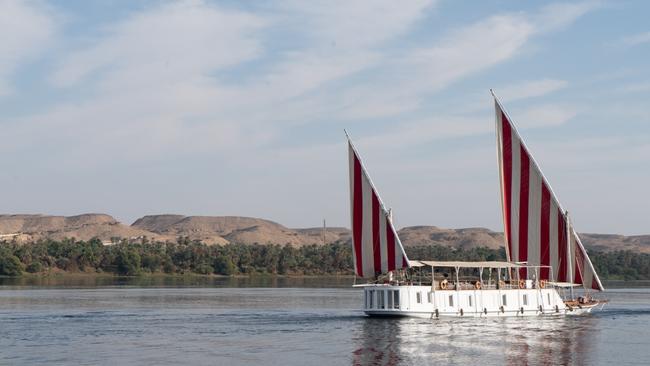
Sibella Court isn’t used to being grounded. The Sydney-based interior designer and founder of The Society Inc. has spent years travelling the globe as a source of creativity to fuel her many endeavours, including a design studio, retail shop and books. So naturally, as international travel continues to unfurl, Court has her sights set on returning to a special place that is sure to spark inspiration: ancient Egypt.
She’s not going alone. Court is leading an intimate, eight-night tour from October 7 - 15 in collaboration with luxury operator Prior. The journey begins in Luxor then winds up the Nile on a traditional dahabiya sailing ship. Along the way, she’s revisiting places that enchanted her when she ventured to North East Africa before the pandemic hit: wandering through ancient quarries and fishing villages, marvelling at tombs and temples and stopping to paint and capture the moment when inspiration strikes.
Here, Court shares the pages from her travel journal to offer a glimpse at ancient Egypt through her inspired lens.
–
Cairo
Stay
We arrived in Cairo early morning on a Saturday, a quiet day in the city, and were welcomed by the city’s beautiful skyline which is just as layered as Cairo’s past; minarets, onion tops, clock towers, fort halls, church spires and skyscrapers all silhouetted by the morning sun. Our Nile view rooms at the Four Seasons provided further opportunity to look out over the cityscape, and of an evening watch the feluccas launch and sail into the sunset. Cairo is built of sandstone and limestone from quarries that skirt the city, and it’s hard to escape the feeling of having stepped into a romantic film of a time gone by.
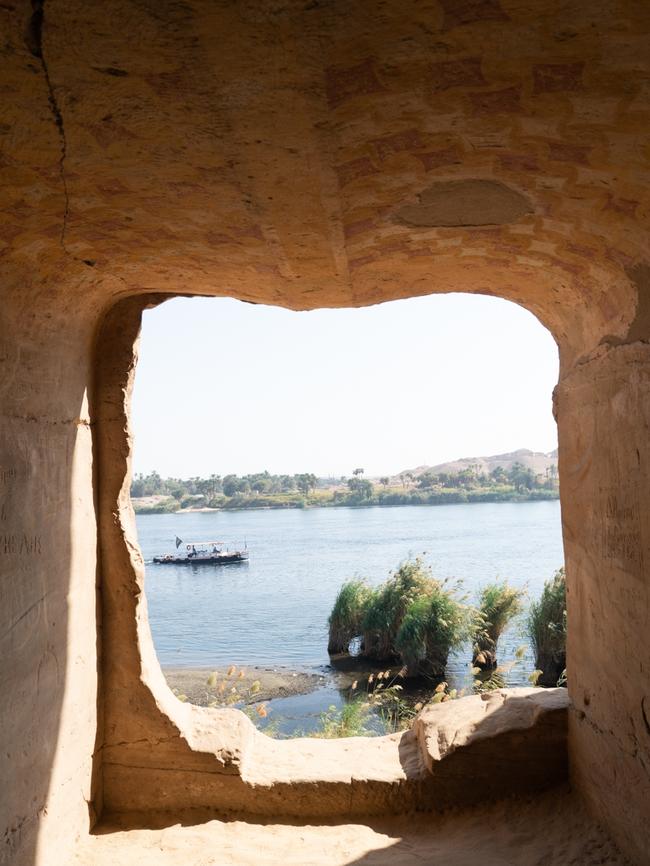
Each morning we enjoyed breakfast at the hotel, a delightful variety of flavours of cumin, paprika, cayenne, diced tomato, tahini, lime, dates and Egyptian bread (like pita, but better). The mango drink was thick, sweet and decadent although any of the seasonal juices with lime and mint are a refreshing boost to start the day.
Indulge
Part history, part food tour, a great way to get your geographical bearing and see an insider’s view of Egyptian food is with a guide. Laila, founder of food-tour company Bellies En-Route, lead us through side roads that hinted at remnants of European architectural influences (old cinemas and Art Deco facades) and introduced us to incredible flavours and bite-sized meals at eight different stops along the way.
My culinary highlights were green bean cardamom coffee, broth and green leaf dressing for rice and falafel made with herbs and spice crust. The surrounds are all part of the adventure: traditional freshly-baked bread cooling on bamboo racks, spice and seed sellers, bicycle repair shops, cafes full with young and old backgammon players, antique stores and sweet shops. It’s bustling and enchanting, with delicious mouthfuls along the way.
Not far from Catsaros Gallery, the iconic Felfela restaurant has been offering authentic meals since 1959 in a somewhat fantastical setting. You feel as though you have stepped into another world from the one on the street, where jungle meets cafe. It’s a great spot to pause for lunch before circling the block for dusty antique stores in the surrounds.
Discover
The Lehnert and Landrock Bookshop founded in 1904 is accessed by the most romantic of old lifts, all part of the joy of the visit. Once inside peruse through the books and old iconic photographic prints taken by two brothers who extensively photographed Egypt in the early 1900s. I left with some portraits, old postcards from the 1950s and felucca prints.
Meanwhile, a treasure trove of Egyptian and European antiques and textiles can be found at Catsaros Gallery. Owner Mr Wadgy is an intriguing antique dealer as well as a linguist (he speaks a dozen languages) and his collection is housed in an old 1919 cinema studio. It is a somewhat haphazard collection at first sight, but if you dig a little deeper and sift through, you are bound to find something. I came out with a watercolour once on the walls of one of Cairo’s top hotels and a dahlia oil painting, rolled and reframed once I arrived home.
While visiting Mr Wadgy, I met interior designer Loulia of Alef Gallery, known for her patterned and colourful designs. I stopped by her store and felt as though I had dived into a luxurious and rich world of colour. Her printed Egyptian cottons are beautiful and inspired by travels, the silk road caravanserais and surrounding countries and their motifs (you’ll spy Alef’s handiwork in the fabrics and furniture at La Maison Bleue, El Gouna).
A large section of the Souq El-Asr is second hand clothes and soft furnishings, but there are some gems in here. Visit fabric shop Kolta and then weave your way through the maze of alleyways heavily scented with machine oil for used car parts. After meandering and asking for directions, you will find yourself in a walled, open air spare parts market covered in artfully displayed brake pads, shock absorbers and the like. More art installation than market in my eyes, it’s very Mad Max, but in a way that Ettore Guatelli would be impressed!
Explore
There are some incredible historical places of worship in Cairo and I get a little saturated when visiting too many, but these ones are an interesting list to visit if it is your thing.
Resting on top of the hill is the Citadel and Alabaster Mosque from 1363, providing a view of Cairo and features the lovely alabaster, with simple oil lamps on long chains and such beauty in the structures. After making your way to Coptic Museum and the Hanging Church, take the time to peruse the Saint Sergius bazaar and covered bookshop alley.
Next, get lost in the monumental Egyptian Museum purpose built by a French Egyptofile in 1902, and go down the rabbit hole of 7000 years of Egypt’s layered histories. It houses a range of relics, from large stone pieces scattered around the garden at the entry right down to the smaller finds from archaeological digs showcased in vitrines.
There’s a chaos about the place, but in the best possible way; one may believe the stacked relics in a corner or shemozzle of a room with open crates, discarded ladders & statues covered in drop sheets may be in preparation for the opening of a new location in Sept 2020, but the museum has been in this ramshackle state for decades, or so I am often told. I love it, it’s certainly my kind of museum. A very popular destination so I would recommend getting there at opening and investigate pre-booking tickets!
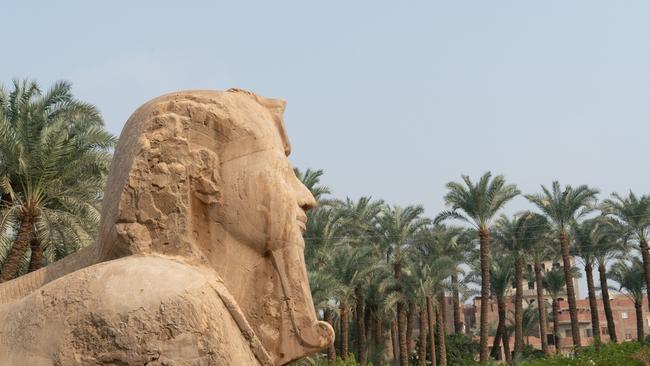
Having dreamt of sighting The Great Pyramids of Giza for a couple of decades, I can now say they didn’t disappoint. We started with lunch at Mena Hotel, looking at a rather surreal backdrop of pyramid peaks above the gardens of Mena. Upon arriving at the pyramids themselves, I bypassed the internal tour (I’m not one for confined spaces) and stood in awe of the building phenomenon and wandered the 3 pyramids of the Queens as well as the solar boats made of papyrus rope and Lebanese cedar. To view the Sphinx up close and understand its sheer size & majestic presence sans nose & beard is bucket list stuff. Don’t forget to look down at the various sites, the paving underfoot is often reused casing that has fallen from the pyramids.
Once the ancient capital of Egypt, Memphis is now an open air museum set among a backdrop of palms. The sphinx here is somewhat smaller than its Giza counterpart but no less beautiful in its entirety and the monumental Rameses ll statue, once standing, rests peacefully on his back. Artefacts are scattered throughout the gardens, just the immense weight & size of the tooled stone is mesmerising. Granite and rose limestone can be found throughout, and look out for the blue eye of Horus.
The ancient cemetery of Memphis and home to the oldest intact stone structure dating from 2700BC, the Step Pyramid of King Zoser, can be found at Sakkara. I don’t normally pursue crowded & tight spaces, but I did step inside this pyramid to view the incredible hieroglyphics (1000 distinct characters!). King Zoser’s House of Eternity is a feat of architecture and the light play, carved columns symbolic of reeds and the simplicity of form and structure would make the minimalist architect weep. While in the area, I stopped at the papyrus maker to see the process of paper making and bought a sheet, later cut into smaller pieces for watercolour painting when cruising down the Nile.
–
Luxor
Stay
For the middle leg of our Egypt trip, we took a short one-hour flight to Luxor, across extensive views of the desert from the air, spying far below the life the Nile offers to those that live by its shores; weaving patches of agriculture knit the desertscape. It’s truly amazing after the chaos of Cairo and an oasis in the desert. In voyaging to the Al Moudira Hotel we passed sugarcane, corn and giant Egyptian cabbages, palms and bougainvillea.
An enormous pampas grass arrangement greets you in the brick domed entrance hall of the hotel, after a very unassuming, discreet street access and you can’t help but wonder where you are. You step into a world of colour, pattern on pattern, murals and wallpaper. Big airy rooms with dome top ceilings in high stained glass, where traditional encaustics sit next to Egyptian antiques. Rendered ochre toned painted columns, a central fountain, inner sanctuaries, old portraits and green velvet settees weave a spell of jet-set nomad. Look down when strolling around the patio and terraces, the amazing floor is a crazy ceramic pave made of many, many remnants in a rainbow of colours. Jazz plays of an evening, mixed in with sounds of birds chirping, donkeys braying, palm fronds swooshing and water trickling – all the sounds I imagine an oasis of the past would project.
Indulge
The oldest rest house of the western bank of Luxor, we stopped at the Marsam Hotel for a delicious lunch in between visiting the Valley of the Queens and the Mortuary Temple of Hatshepsut. Their fare is organically grown on site, making for a delightfully fresh meal. They also grow their own wheat which goes into producing the bread & desserts made daily. Be sure to find a spot outside under green boughs set against a background of lemon yellow walls.
Explore
Located in a spectacular spot, Karnak and Luxor Temple can be found in the New Kingdom capital built over 2000 years ago by pharaohs (Nefertiti included). Majestic in its size and decorative details, with ginormous columns and obelisks with no surface left unadorned. While the vibrancy of the original colours has faded with time, you can picture the full glory of sandstone with accents of alabaster, rose quartz and black basalt. Another impressive, awe inspiring, building feat of this ancient land; just imagine the sound of stonemasons shaping, chiselling and chipping away. A 3km sphinx-lined road connects Karnak to Luxor Temple and was once trodden daily for prayers and special ceremonies.
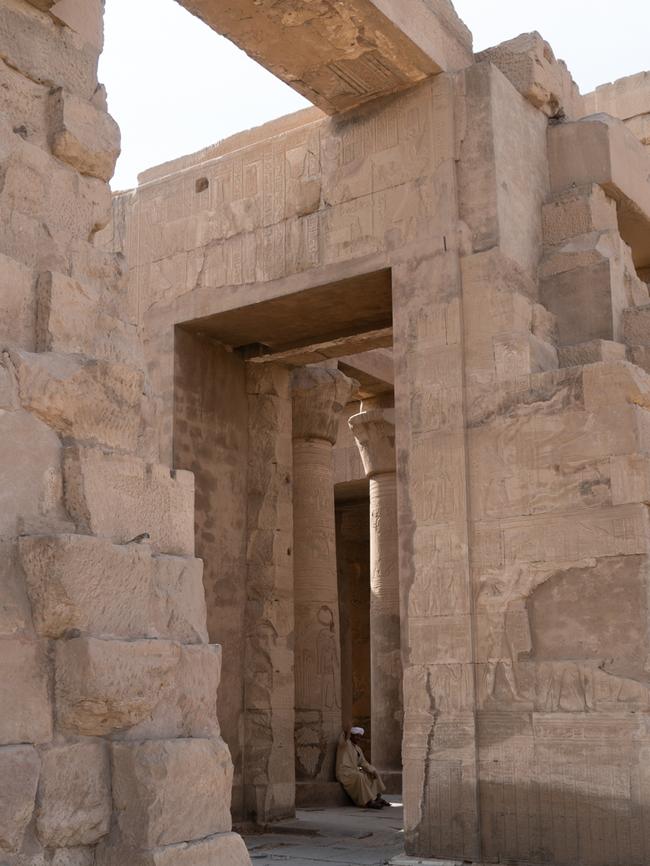
On the other side of the Nile you’ll find the Valley of the Queens, Valley of the Kings and Deir el-Medina (Valley of the Artisans). The Valley of the Queens and Kings are worth a visit, but it was the workers village of Deir el-Medina that drew my interest. The breathtaking paintings with amazing vibrancy that have stood the test of time are stand out, and it is intriguing to learn that this village may have been set up apart from the rest of the local population, to preserve the industry secrets of the artisans of that time.
But all the charm of archaeological digs is distilled into the former home of Howard Carter, the archaeologist who discovered the tomb of King Tut. An Egypt enthusiast, his passion for the country and its history is present in the residence, which would have been a stark contrast to the conveniences of London living. Here’s the house of one who loved their work, and I could imagine Carter sitting in the recreated office jotting down his discoveries after a long day’s dig.
–
The Nile
The last leg of this magical journey ended with an enchanting journey down the Nile aboard the luxury dahabiya, Malouka, of Nour El Nil’s fleet. Upon boarding in Esna we were greeted by the distinctly recognisable chic red and white sails, wooden boats with canvas trimming, magical & mythical. The red & white stripe is continued in the backgammon room, an easy room to settle in with bolstered lounges, portraits and chandelier wall sconces on gloss warm white wall.
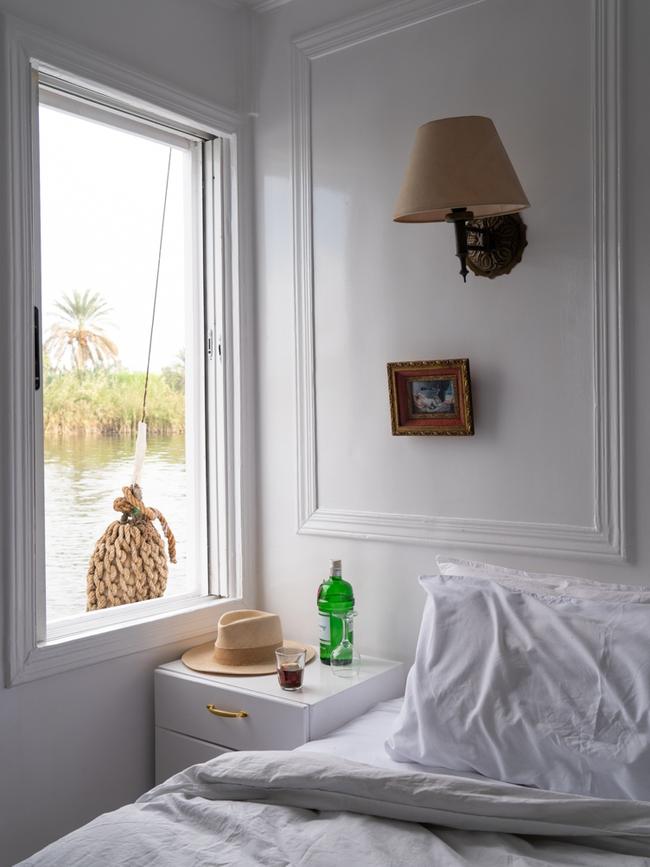
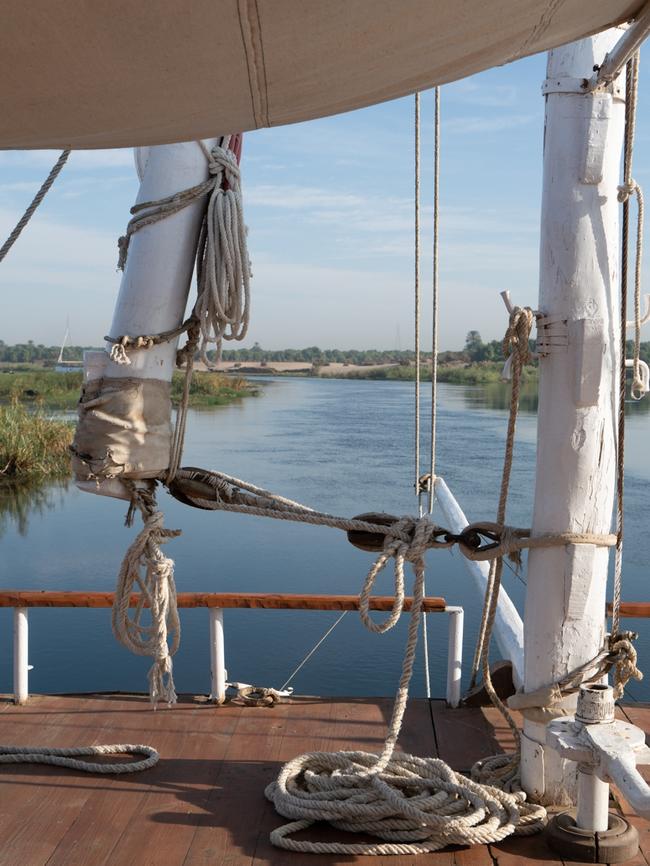
The staff work tirelessly and with care, from sailors to waiters to hosts and guides, who accompany us on little expeditions; a visit to the Temple of Edfu, a walk through the ancient sandstone quarries, strolls through fishing villages and small cruises on the accompanying felucca to small sandy islands and swims in the cool refreshing water of the Nile. I have dreamt of sailing this majestic river for two decades after reading the Desert Queen many moons ago, and it is now one of my top five experiences of my life.
Sensory Journey Through Ancient Egypt With Sibella Court will take place from 7-15 October, 2022 and is hosted by Prior.



To join the conversation, please log in. Don't have an account? Register
Join the conversation, you are commenting as Logout